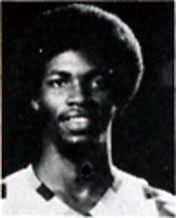Adrian Autry becomes the eighth head coach for Syracuse's Men's basketball team. The first year has had different levels of success.
Prof. John A.R. Scott was the first head coach, with his first season 1903-1904. Scott would go 11-8 his first year, winning his first two games. Scott took over a team that was 1-8 the prior season, and he would go 64-54 in his career.
Ed Dollard would become the second SU coach in the 1911-1912 season. Dollard would go an impressive 11-3 his first season, winning his first two games. Dollard would have big wins over Colgate and Penn to end the season. He took over a team that was 6-11 the previous year. Dollard would go 152-58 in his 13 year career at Syracuse, including a Helms Foundation National Championship in 1917-18 season.
 |
| Lew Andreas |
Lew Andreas became Syracuse's 3rd coach with the 1924-1925 season. Andreas would have an impressive first year going 15-2, winning his first 11 games. His first season had two big wins over Colgate. He took over a team that was 8-10 the previous year. Andreas would go 358-134 in his career, with two appearances in the NIT, and a Helms Foundation National Championship in 1925-1926 season behind Vic Hanson.
Marc Guley was Syracuse's 4th coach starting with the 1950-1951 season. Guley would lead the team to the post season his first year going 19-9. He would win his first three games. He took over a team that was 18-9 the previous year. His team beat #14 Toledo, and #6 Bradley on its way to winning the National Campus Tournament Championship. Guley would go 136-192 in 12 years at Syracuse, with one NCAA Tournament and one National Campus Tournament. His last season was the worst in Syracuse history with a 2-22 record.
Fred Lewis was Syracuse's 5th coach starting with the 1962-1963 season. Lewis would go 8-13 his first season, a marked improvement over the 2-22 the previous year. Lewis would win his first game before losing his second. Lewis was 91-57 in his six years at Syracuse with 2 NIT and 1 NCAA appearance.
Roy Danforth was Syracuse's 6th coach starting with the 1968-1969 season. Danforth would go 9-16 his first season, losing his first five games before beating Penn State 71-51. He took over a team that was 11-14 the previous season. Danforth would go 148-71 over 8 seasons, with 4 NCAA bids, 2 NIT bids, and a surprise Final Four in 1975.
Jim Boeheim was Syracuse's 7th head coach starting with the 1976-1977 season. Boeheim would go 26-4 his first season, and took the Orangemen to the 2nd round of the NCAA. He would win his first regular season game, before losing his second to West Virginia. He took over a team that was 20-9 the previous season. Boeheim would go 1116-441 in his 47 year career with the Orange, going to 35 NCAA tournaments, 7 NIT, 5 Final Four, and the 2003 National Championship.
Adrian Autry is Syracuse 8th and current coach starting with the 2023-2024 season. Autry's career is just beginning; he is already off to a good start at 2-0.










